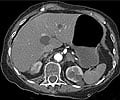
‘Two chemicals widely used to flavor electronic cigarettes could be impairing the function of cilia in the human airway’
Tweet it Now
"Although chemicals used to flavor e-cigs are frequently used, little has been known about the mechanism of how they impact health. Our new study suggests that these chemicals may be harming cilia--the first line of defense in the lungs--by altering gene expression related to cilia production and function," said Quan Lu, associate professor of environmental genetics and pathophysiology. Lu and Joseph Allen, assistant professor of exposure assessment science, were co-senior authors of the study.The study will be published February 1, 2019, in Scientific Reports. It is the first to look at the impact of flavoring chemicals in human epithelial cells, which are the type that line the lungs.
Millions of people use e-cigarettes, and a recent rise in use among school-aged children has alarmed public health experts. In mid-December, U.S. Surgeon General Jerome Adams labeled youth e-cigarette use an epidemic. Scientific studies examining the potential health effects of e-cigarettes and their myriad chemical components have not kept pace with the rise in use.
In a previous study, Allen and Harvard Chan colleagues found flavoring chemicals--primarily diacetyl and 2,3-pentanedione--in over 90% of e-cigarettes they tested.
In addition to being used in e-cigarettes, diacetyl is used as a flavoring agent in foods such as butter-flavored microwave popcorn, baked goods, and candy; it can create a variety of flavors. Diacetyl is considered a safe ingredient in foods, but evidence suggests that it can be dangerous when inhaled. It has been previously linked with bronchiolitis obliterans, a debilitating lung disease that was dubbed "popcorn lung" because it first appeared in workers who inhaled artificial butter flavor in microwave popcorn processing facilities. After the link between diacetyl and popcorn lung was reported, 2,3-pentanedione was sometimes used as a substitute.
Advertisement
In addition, the researchers found that even low levels of both chemicals affected gene expression, suggesting that current standards for safe limits of exposure to these chemicals for workers may not be sufficient. There are no such standards for e-cigarette users, according to the authors.
Advertisement
Source-Eurekalert















